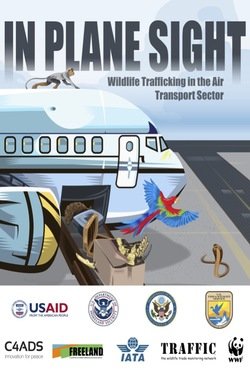By Mary Utermohlen and Patrick Baine
The report, In Plane Sight: Wildlife Trafficking in the Air Transport Sector, produced by C4ADS as part of the USAID Reducing Opportunities for Unlawful Transport of Endangered Species (ROUTES) Partnership, analyses global airport seizures of illegal wildlife and wildlife products from 2009 to 2017, finding trafficking instances in at least 136 countries worldwide. New data from 2017 shows a massive spike in rhino horn seizures, which nearly tripled from 2016 numbers. The seizure data indicate that wildlife traffickers moving ivory, rhino horn, reptiles, birds, pangolins, marine products, and mammals by air tend to rely on large hub airports all over the world. Collectively, these categories account for about 81 percent of all trafficked wildlife, according to the United Nations Office on Drugs and Crime (UNODC), and serve as indicators for broader trends within illicit wildlife trafficking. According to the In Plane Sight report, routes of wildlife products such as ivory, rhino horn and pangolin tend to flow from Africa to Asia, often transiting first through the Middle East and Europe. Wildlife traffickers carrying live animals, such as live birds and reptiles, generally rely on direct flights worldwide with different hotspots for wildlife trafficking in every region. China was by far the most common destination for all seized wildlife products between 2009 and 2017.
Washington, DC: C4ADS and The USAID Reducing Opportunities for Unlawful Transport of Endangered Species (ROUTES), 2018. 214p.


